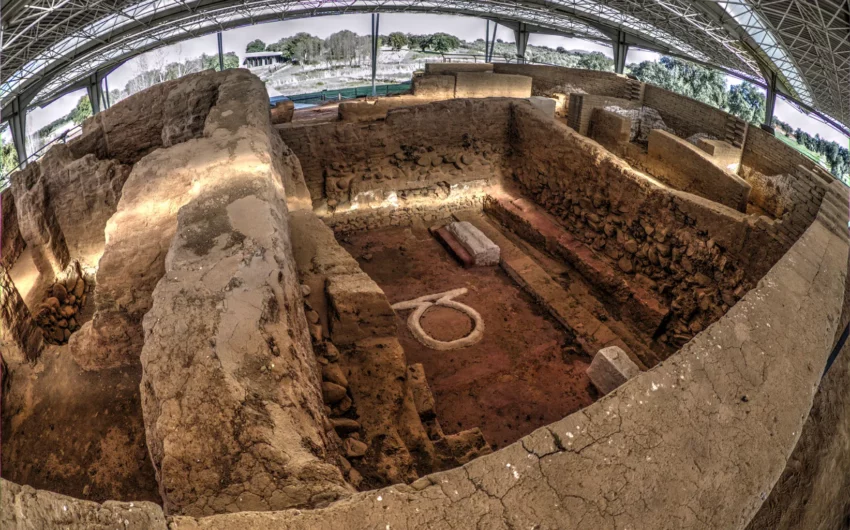Get your dose of History via Email
The Archaeological Site of Cancho Roano
Cancho Roano is an archaeological site located near the town of Zalamea de la Serena in the province of Badajoz, Extremadura, Spain. This site is of significant historical importance as it is considered one of the best-preserved Tartessian sites, revealing aspects of both Tartessian and Orientalizing architecture and culture from the first millennium BC. Discovered in 1978, Cancho Roano has provided an invaluable window into the complex past of Tartessian civilization and has become a focal point for researchers aiming to understand the extent of cultural interactions in ancient Iberia.
The Discovery and Excavation
The discovery of Cancho Roano took place fortuitously during agricultural work. Since 1980, systematic archaeological excavations have been conducted by the University of Seville, led by Thilo Ulbert and Sebastian Celestino Pérez. These excavations have unearthed a wide variety of structures and artifacts that have contributed significantly to the academic knowledge surrounding the ancient Tartessians, who once played a considerable role in the trade networks connecting the Mediterranean and Atlantic worlds.
Structure of Cancho Roano
The site’s structural composition is characterized by distinct building phases. Initially, the site consisted of a rectangular enclosure measuring approximately 60 meters on its longer side. Within this enclosure, evidence shows that there was a building complex centered around a purified, unpaved courtyard. In later building phases, a contiguous quadrangular structure was added, and by the last phase, the entire complex underwent transformation to include an almost square enclosure with notable architectural components such as ashes, bones, and intentionally broken ceramics.
Interpretations of Its Purpose
While the exact purpose of Cancho Roano is debated, some scholars have theorized that it could have been a religious or ceremonial site, potentially associated with the worship of Orientalizing deities. The architectural similarities between Cancho Roano and other Orientalizing sites support the idea that certain building practices and religious beliefs were shared across different communities within the region. Notably, the presence of ashes and animal bones within the complex suggests rituals of sacrifice, which is a practice often associated with religious ceremonies.
Artifacts Found at Cancho Roano
Artifacts recovered at Cancho Roano point to the cultural richness of the site. The findings include ceramic vessels derived from Phoenician and Greek origins, signifying the prolific trade exchanges during the period. These artifacts also indicate the adaptation of foreign artistic styles by local artisans, exemplifying a fusion of Tartessian and Mediterranean cultures that became characteristic of the region.
Chronology and Final Destruction
The stratigraphic evidence at Cancho Roano suggests that the site remained in use from the 6th century to the late 5th century BC. However, the final destruction of the complex is believed to have taken place around 450-400 BC. Notably, the nature of the site’s demise appears to be deliberate, involving the sealing of the entrances with large stones, suggesting a controlled closure of the complex.
Importance of Cancho Roano in Tartessian Studies
Cancho Roano stands as an indispensable reference point in the study of Tartessian civilization and the broader cultural landscape of first millennium BC Iberia. It provides evidence of the architectural and religious practices of the Tartessian culture and underscores the extensive exchange networks that connected Iberia to other Mediterranean civilizations. Through Cancho Roano, historians and archaeologists can piece together the complex interactions between indigenous and foreign elements in ancient Iberian societies.
In summary, the archaeological site of Cancho Roano provides an important testament to the Tartessian civilization and its integration within the wider Mediterranean cultural milieu. The excavations and artifacts discovered there offer crucial insights into the economic, artistic, and religious life of the Tartessian people and shed light on the extensive cultural exchanges that occurred during the first millennium BC.

